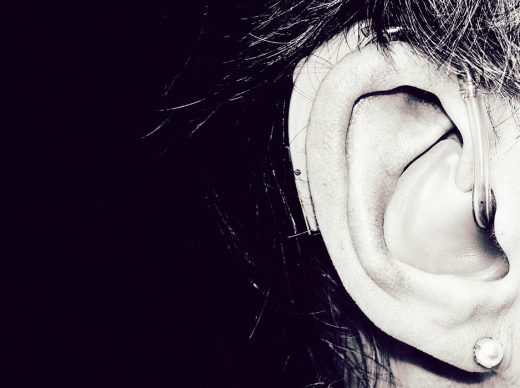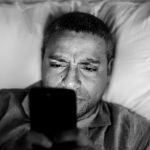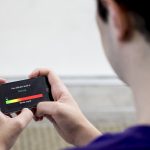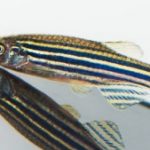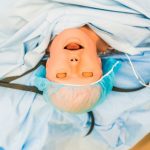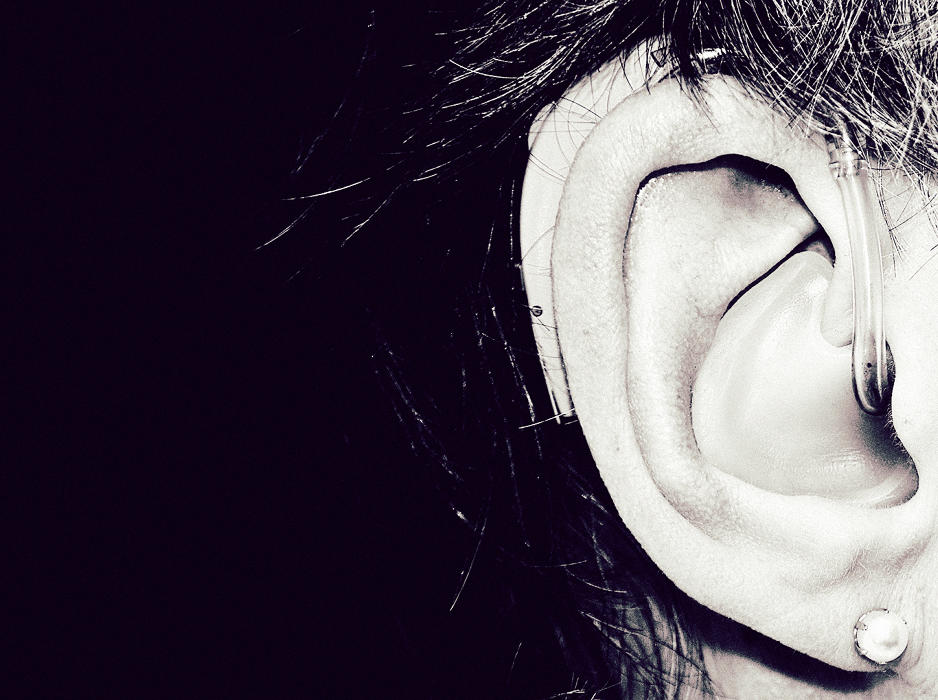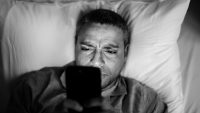Why Isn’t There A Warby Parker For Hearing Aids?
Glasses are cool, hearing aids are not. Eyeglass frames in countless varieties are popular fashion statements. Beige earplugs aren’t a fashion statement people want to make, and many can’t even afford to. Although designer glasses can be pricy, there are stylish, budget-friendly options like Warby Parker’s $95 models. Hearing aids average $4,700 a pair in the U.S.
“Our goal is to be the Warby Parker of the hearing-loss world, starting with developing countries,” says Audra Renyi, a 34-year-old former investment banker who’s been a hearing care advocate since 2007. She’s launching a company called Hearing Access World that aims to cut the price of hearing aids by 75%. It’s a reasonable goal: Costco has brought down prices about two thirds in the U.S. by buying and selling in bulk. “Our goal at Hearing Access is to go from the existing market, which is a low-volume, high-margin retail market, to a much higher-volume, lower-margin business and market,” she says.
According to the World Health Organization, 360 million people have severe hearing loss. Add everyone with some level of impairment, and you get about a billion potential customers. How many hearing aids are sold every year? A mere 13 million, mostly in developed countries.
Renyi knows her market well as executive director of World Wide Hearing. The Montreal-based nonprofit provides testing and low-cost hearing aids in poor countries like Guatemala and Vietnam. She hopes to bring prices down globally by playing directly in the market with her new social venture.
Hearing Access World and other startups—such as the budget hearing-aid maker Sound World Solutions and the sound-filtering headset company Doppler Labs—point to the huge advances in consumer tech products like Bluetooth headsets that have been made more fashionable by Apple’s new AirPods. The same cheap, ubiquitous components in those devices could improve hearing for everyone, they say.
Even in the wealthy U.S., most people go without. Thirty million Americans have hearing loss, yet up to 86% of adults who might benefit from hearing aids don’t use them, according to a June 2016 report on hearing by the National Academies of Science, Engineering, and Medicine.
“Are hearing aids going to be the new status symbol for the rich?” says Janice Lintz, an advocate and consultant who advises companies and institutions on accommodating people with hearing loss through her company, Hearing Access & Innovations. Like Renyi, whose father and aunt are severely hearing-impaired, Lintz has a family connection. Her adult daughter has been hearing-impaired since childhood.
Pricing Mayhem
The U.S. government doesn’t cover the cost of hearing aids for older adults under Medicare, nor do most private insurance plans for any ages. “If Medicare starts covering something, a lot of insurance companies will follow,” says Meg Wallhagen, professor of nursing at the University of California, San Francisco. Medicaid, which serves the poorest Americans, varies by state. Some do cover hearing aids, mainly for children. The coverage is generally small compared to the overall cost of devices and care.
“There’s so many consumers every day that I hear say, ‘I need something, but I have to decide between [buying hearing aids] and putting my kid in daycare or paying rent. I can’t afford $5,000 out of my pocket,'” says 38-year-old Kristen “K.R.” Liu, a Silicon Valley marketing veteran with severe hearing loss. “They just suffer,” she says. Liu is also on the board of the Hearing Loss Association of America and a promotional “ambassador” to World Wide Hearing.
One reason for high hearing-aid prices: They bundle services by the audiologist. This includes hearing tests, cleaning, and maintenance, in addition to fitting the device and tuning it to a person’s needs by checking deficiencies in certain frequency ranges. “It’s not like eyeglasses. You don’t put on a pair of hearing aids and start hearing automatically,” says Chris McCormick, CMO of Starkey Hearing Technologies, one of the six hearing aid manufacturers that control over 90% of the market.
How much do these audiologist services cost? Who knows? You can’t buy a Starkey or most other hearing aids unbundled. The problem is compounded, says Lintz, because there aren’t uniform descriptions of the specs and features so people can compare models. “Who purchases a $6,000-to-$8,000 item without doing research?” says Lintz. “Just because the office you walk into, that makes a huge profit on it, says, ‘This is good for you’?”
Most audiologists sell a single hearing aid brand most of the time, says the President’s Council Of Advisors On Science And Technology. In an October 2015 report on hearing aids, the government agency recommended unbundling so that, as with glasses, people can get testing done in one place and elect to use the report, called an audiogram, to buy their hearing aid and get it fitted someplace else. Potential benefits of unbundling were also mentioned in the National Academies of Science, Engineering, and Medicine report.
Some companies do sell hearing aids directly to consumers, who simply sign a waiver acknowledging that they are buying on their own, without guidance from an audiologist. (Online, it could just mean clicking a box on the checkout page.) That doesn’t help people who want guidance from a specialist but don’t want to be locked in to buying from them.
Unbundling all hearing aid sales could be tough on mom-and-pop audiologists, who spend years consulting with patients to close those deals: The average time from first visit to sale is seven years. The solution is to reform health insurance coverage, says Wallhagen, who chairs the Hearing Loss Association of America‘s board of trustees.
Before patients reach the point of needing hearing aids, audiologists can help with evaluations and teaching lifestyle strategies to deal with impaired hearing; they can also provide continued help for people who have hearing aids. Known as aural rehabilitation, it can be anything from explaining to friends and family what you can and cannot hear to learning how to make sense of the flood of new sounds you can now pick up with hearing aids. “If we could get those services covered, it could shift the model to where there’s less focus on selling hearing aids and more focus on: What really are your hearing needs?” Wallhagen says.
Consumer Electronics To The Rescue?
While hearing aid sales are minuscule, consumer electronics companies are selling hundreds of millions of audio devices, such as Bluetooth headsets, that do many of the same things. Mass-market CE components are going into devices called personal sound amplification products, or PSAPs, which have become unofficial budget hearing aids.
Emphasis on “unofficial.” The U.S. Food and Drug Administration prohibits claiming that the devices can help people with hearing loss. (We contacted the FDA, but they declined to be interviewed.) “They look like hearing aids, they act like hearing aids. For all intents and purposes, many people would consider that they are hearing aids,” Renyi says. The President’s Council report sort of agrees, recommending that PSAP makers be allowed to say that their products can at least help people with “age-related hearing loss no worse than mild-to-moderate.”
A June study by Northwestern University compared 11 products, a mix of official hearing aids and PSAPs ranging in price from $8 to $3,200. It found that some PSAPs did as well or better than some hearing aids. Some super-cheap ($49 or less) PSAPs were abysmal, but so were some low-cost ($199) devices with FDA designation as hearing aids.
“The technology in our hearing aid and in our personal sound amplifier is exactly the same,” says Shawn Stahmer, VP for business development at Sound World Solutions. “The restrictions are all on the marketing side.” Its Companion Hearing Aid sells for $449 each, while the very similar CS50+ Personal Sound Amplifier sells for $349. (It’s one of the companies that sells hearing aids directly to consumers.) Sound World has brought down prices by eschewing custom components. “The chip that we’re using for our [device’s] brain is part of hundreds of millions of units that are already in the field for Bluetooth products,” Stahmer says. Some fudging is required to install custom signal-processing algorithms on a chip that wasn’t designed for hearing aids.
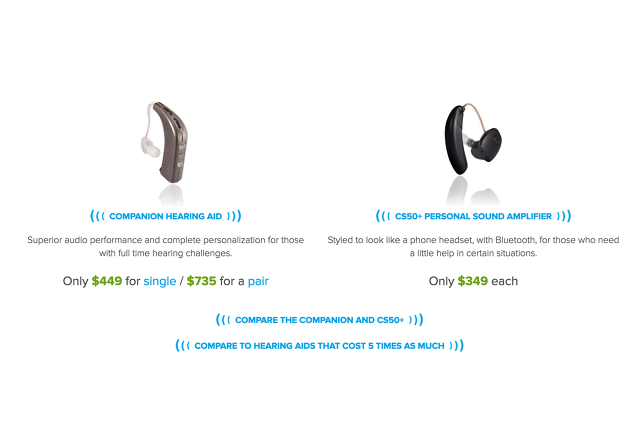
There’s a problem with mass-produced chips from companies like Qualcomm or Intel, according to Starkey’s McCormick. “They don’t understand ultra-low voltage,” he says. “Think about the battery that’s in your iPhone. Try putting that in your ear.” Hearing aids have to run 24/7, for a week at a time on a battery about the size of an aspirin, he says.
Renyi says her company’s hearing aids will get a week of battery life. Sound World Solutions claims 18 hours battery time for its Companion,
which recharges like a Bluetooth headset. Most hearing aids still use disposable batteries that add up to about $50 per year.
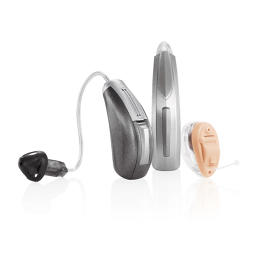
Starkey is offering a lot with its latest bespoke chip, called Synergy, which powers its new Muse, Halo 2, and SoundLens hearing aids. The 1.2-volt system chip has a quad-core processor running two “compressors”—software that filters out distracting noise. One optimizes speech, while a second processes music. The chip is fast enough to detect and reduce the noise that occurs in between syllables as someone speaks. Directional microphones allow the devices to identify and filter out environmental noise from behind or the side. “We can analyze if a person is sitting in a restaurant talking to a person and there is significant background noise, and the hearing aid makes decisions based on the particular type of audio input,” McCormick says. For example, it can automatically dampen the sound of a coffee grinder at a café. “We’re essentially delivering for hearing-impaired people at levels exceeding those of people who have regular, normal hearing,” says McCormick.
“If you just want to communicate with your family and friends, you’re not going to need all this high-rent stuff,” Wallhagen says. “And if the new ones come into the market, some of the older ones [now] don’t cost as much, but they’re really good.”
The Halo 2 has Apple’s “Made for iPhone” designation. It streams all audio, be it iTunes or Siri, and is adjustable through an iPhone app. Halo 2 uses the phone’s GPS to identify a location and call up the audio settings that worked best there in the past. At a recent tech conference, says McCormick, “People would come up…and say, ‘I don’t need a hearing aid. I have normal hearing. But why can’t I have that?'”
They may get their wish. “You can make these for normal-hearing people, and that’s certainly an area of consideration that we’re exploring aggressively,” says McCormick. “Stay tuned, it’s very likely you can have them in the near future.”
A startup called Doppler Labs is also aiming for people who want to hear better than normal. It launched on Kickstarter in 2015 with Here Active Listening, a $249 set of AI-driven wireless earbuds that recognize and filter ambient sounds, such as bringing down background noise in a subway or boosting voices during a conversation. A smartphone app lets users pick filters and effects (like simulating the ambience of a concert hall), adjust volume, and tweak a five-band equalizer. Doppler’s next product, Here One, debuts in November for $300 and adds wireless streaming from smartphones and other devices.
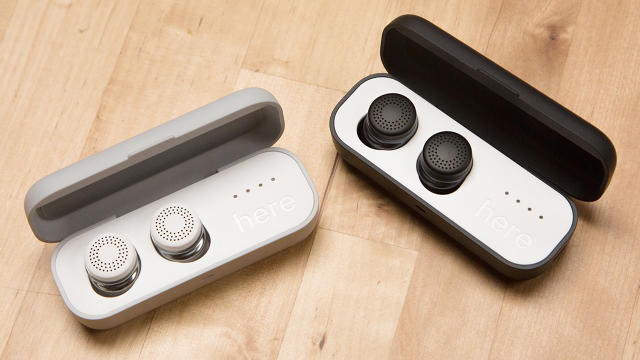
Doppler’s headphones drift into hearing-aid territory, starting with the setup. It begins by creating a “personal listening profile,” which sounds a lot like a hearing-aid fitting. “What that does is, it actually takes a snapshot of each of your ear’s unique characteristics and calibrates the entire system to your hearing,” says Doppler’s 29-year-old CEO Noah Kraft, who came up with the idea for the company because of his love of music. He then blurts out what could be mistaken for the disclaimer in a TV commercial for pharmaceuticals: “To be very clear,” he says, “Here One is not a medical device. It is not meant to be a medical device. It is not meant to replace a hearing aid. If you have severe hearing loss, you should go to an audiologist.”
I tried the original product while chatting with Doppler Labs at a slightly noisy café in San Francisco. With me was K.R. Liu, who joined Doppler about a year ago as director of accessibility and advocacy. Selecting a filter for restaurants dampened the background sounds of milk steaming or people chattering, and selecting the Human Speech enhancer zoomed in on Liu’s voice. Still, I had the feeling I was listening through an intermediary and had a sense of being under water. Doppler folks say the final Here One (which they didn’t have on hand) will perform better, and that I might need tips in a different size to better fit my ear canals.
There’s still quite a distance between Here One and a hearing aid like Starkey’s Halo 2, and not just on price or legal status. Doppler advertises a five-hour battery life for Here One. (They come in a battery-powered charging case, similar to the Apple AirPods.) “That’s unusable for us,” says McCormick. The Halo 2 automatically adjusts the sound filters to environmental noises. It’s a manual selection process with the Doppler app, although it will suggest what setting to use.

The Here Ones are also bulky, although Doppler plays that up as fashion. “The Warby Parker example is great. People go to Warby Parker who don’t even have vision loss,” says Liu. “They go to wear it because it’s fashionable. I would love to see somebody say that about in-ear tech.” (We asked Warby Parker for its opinion on these comparisons. The company declined to comment.) A self-described “fashion victim,” Liu has short blond hair like Robin Wright that leaves her ears exposed. When we met, her compact hearing aids (which cost $12,000 a pair) were scarcely visible. She wore a blouse with an abstract print in stark black and white, which are the two color options for Here One.
Liu seems awfully excited about a product that officially won’t help her ears. With a little prodding, CEO Kraft admits that Doppler wants to go farther. “Long term, if the FDA changes the regulations, Doppler would love nothing more than to be able to provide tech to all ears,” he says. “If we can provide tech to mild-to-moderate [hearing-loss patients], we will create tech for that. If we can provide tech to people with severe hearing loss, I guarantee you, we can create that tech.”
As consumer electronics companies nudge into the hearing-aid space with PSAPs, and as hearing-aid companies nudge into the CE space, a new wearable tech category may be emerging. Called “hearables” by their boosters, the gadgets could encompass a range of over-the-counter, in-ear devices that allow people to hear better—either by making up for diagnosed hearing deficiency or tweaking how live music and voices sound.
There are a lot of barriers in the way: public health regulations like the FDA’s labeling rules; health care concerns that people will get safe products; ensuring a correct fit; hearing aid makers and audiologists wanting to recoup costs; and technological challenges like getting battery life up and making devices easy to configure. If money and interest flow into hearables, audio technology could advance faster and prices could come down for all devices.
Fashion could also have a hand in determining the trend, though wearable tech has a patchy record. Headphones go in and out of style, with big cans currently en vogue again. Google Glass flopped. Glasses themselves took centuries to become cool and affordable, but they’ve certainly arrived. If companies can get the right mix of tech, style, and price, hearables could be the new glasses.
Fast Company , Read Full Story
(96)

